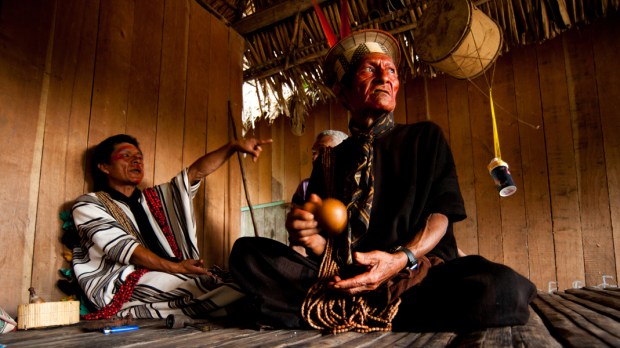Pope Francis is not known to shy away from difficult tasks, and it’s a good thing because his fifth visit to Latin America won’t be a breeze.
Landing in Lima, Peru, on January 18 (after leaving Chile), the pope will spend three days visiting places and people affected by high levels of corruption, violence, and an entrenched gap between rich and poor. He will also shine a spotlight on the reality of life in the Amazon for the region’s indigenous people — an issue that will get a lot of attention in 2018 as the Vatican prepares for a meeting of bishops about the Church there.
After an overnight in the country’s capital, Pope Francis will travel to Puerto Maldonado early on January 19. The city of just over 74,000 people is situated in southeastern Peru in the country’s amazonian region, close to the border with Bolivia.
His first public act in this city will be a meeting with representatives of the indigenous populations of Peru, Bolivia, Brazil and Colombia. Representatives of several indigenous organizations in the region recently sent a letter to Pope Francis telling him the destruction of their ancestral land is their biggest challenge because it deprives them of their most important means of survival.
Bishop David Martinez de Aguirre Guinea, the apostolic vicar for Puerto Maldonado, told the Pan-Amazonian Ecclesiastical Network (REPAM) the meeting will be a lesson in how to dialogue with the region’s indigenous people to answer the question, “What Church do we want in the Amazon?”
Only on January 20 will the pope meet with the country’s civil authorities; he will have a private visit with President Pedro Kuczynski. Cardinal Juan Luis Cipriani of Lima told Italy’s La Stampa newspaper he expects Pope Francis will use the occasion to delicately remind his audience of the value of honesty and obeying civil laws.
Peru has been shaken recently with revelations of widespread corruptionat highest levels of government. Cardinal Cipriani said corruption always impacts the poorest members of society the most, because “it blocks millions of people from getting access to hospitals and other public services,” and benefits a very restricted group of people.
This poor-rich divide is physically evident in Lima where one affluent neighborhood has built a wall at the top of a hill to separate themselves from a hillside area occupied by wooden shacks. The wall is patrolled by private security guards and anyone entering the wealthy neighborhood must show identification to get in.
Trujillo, a city on the northwest coast of the country, is the country’s third largest city and a hub for organized crime. Father Daniele Nardin, a Comboni missionary who has been living in Trujillo for 32 years, wrote on his order’s website “poverty persists and the law of the strongest and crime triumph.” Travel websites advise tourists that it is not rare for city buses to be held up by armed thugs and passengers to be mugged at gunpoint.
Natural disasters aggravate the existing problems in Trujillo. In April 2017 the city was hit by massive flooding and landslides. In Peru alone more than 100 people were killed by flooding and the ensuing landslides while an estimated 14,000 people were left homeless. Many of those who lost their houses were living in makeshift squatters’ neighborhoods on flood plains.
Because of the challenges the residents of Trujillo face on a daily basis and the devastation caused by the flooding, Pope Francis wanted to visit the city and show residents his concern.
The issue of sexual abuse is also of significance in Peru. On January 10 the Vatican appointed Colombian Bishop Noel Lodoño to oversee the leadership of the Peru-based Sodalitium Christianae Vitae — a community of religious men founded in Peru in 1971.
The community’s founder, Luis Fernando Figari, stepped down in 2010 after abuse allegations surfaced against him. The Vatican has ordered Figari to stay away from Peru and the community and appointed a papal delegate to help reform the community. Figari and four others are still under investigation by Peruvian authorities. It is expected that Pope Francis could address the ongoing reforms during his private meeting the the bishops of Peru on the morning of January 21.
Pope Francis leaves Peru the evening of January 21 and arrives in Rome on the afternoon of January 22.

